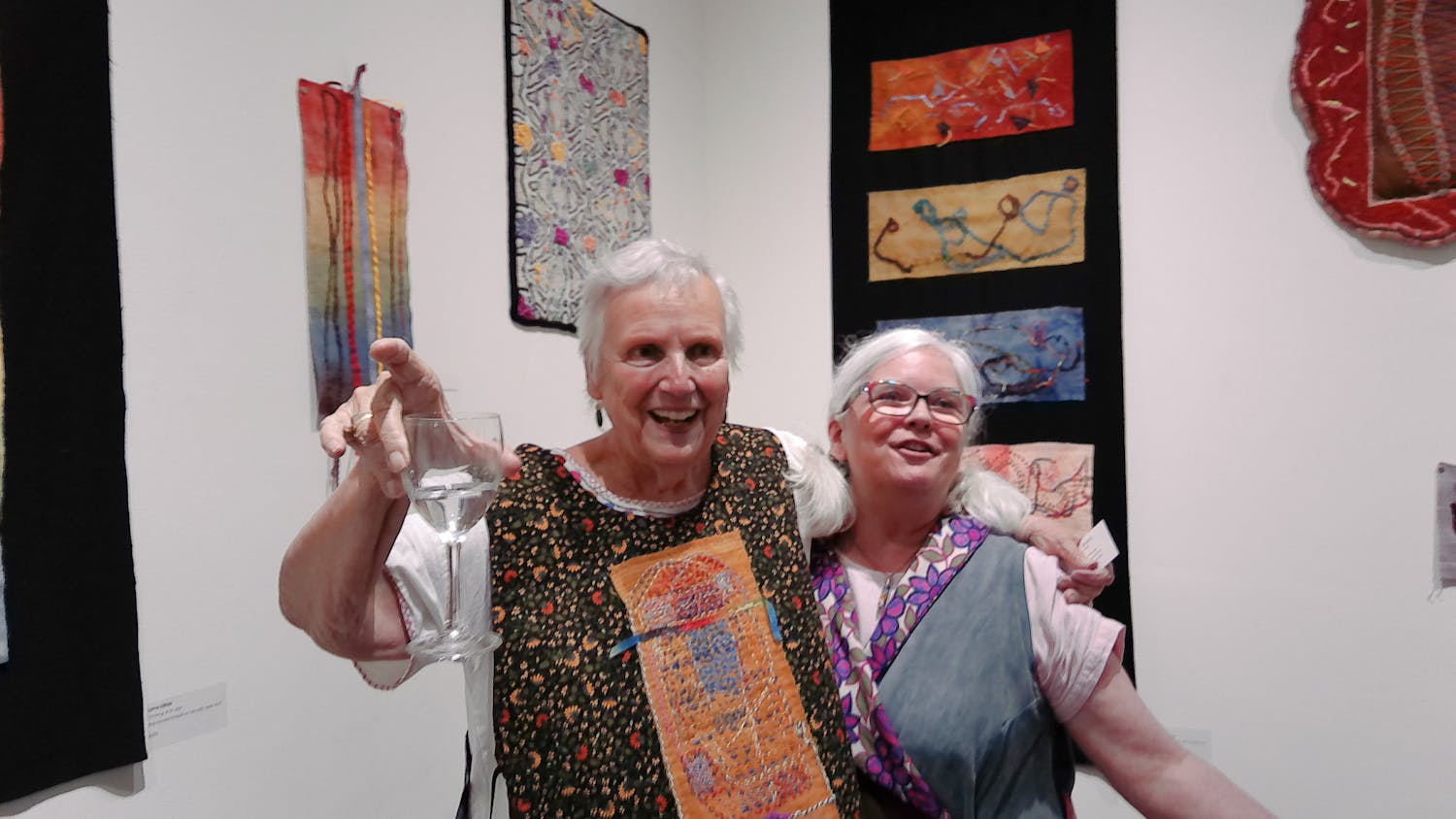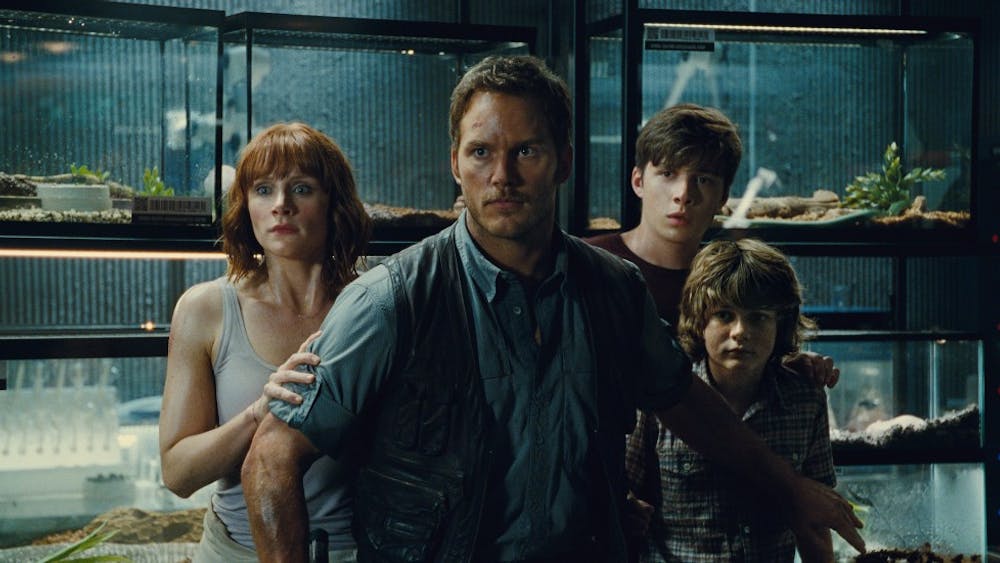Nowadays, guttural vocals, double bass drumming and mosh pits are not only common but expected elements in the world of heavy metal and punk rock.\nMoshing is a form of dance interpreting angry, loud, rebellious and masculine music. Because of the violent nature of bodies slamming into one another, it is also known as slam dancing. It is essentially an elaborate form of roughhousing for a mostly-male crowd. Though it has become a mainstream activity associated mostly with heavy metal, it has roots in the 1970s with punk rock. \nDave Mustaine, former guitarist for Metallica and Megadeth, once had this to say about moshing: "It started off with pogo-ing and doing the worm in the punk scene, and then when the metal scene came along, the people wanted to dance like that (with body contact), but they didn't know what pogo-ing and doing the worm was, so they invented slam dancing."\nMODERN MOSHING\nAs moshing started to become mainstream, two kinds of moshpits emerged simultaneously in both large and small venues: the grindpit and the true slam dance. The grind pit is where dozens of people will sway back and forth squeezed together, sweating and grinding into each other. The mosh pit is a large open space where guys run into each other, almost mimicking a football game or wrestling match.\n"I almost lost my tooth, but it's all in good fun. It's worth it," said Dayton, Ohio, resident Jim Boyd while watching the band Disturbed at Bogart's in Cincinnati.\nMany moshers say slam dancing is the most masculine form of social dancing. It is also a therapeutic way to alleviate the stress in life. \n"We're all here to get away from something. I say do what feels right to you," said Ryan Cincy, a resident of Middletown, Ohio, during a show featuring Flaw and Drowning Pool at Bogart's.\nSince slam dancing comes with the rock 'n' roll territory, young white males dominate the mosh pit, but it's not unheard of to see minorities, adolescent boys, middle-aged men and young women in the pit.\nAmber Dugan, a Cincinnati native, moshed to the music of Flaw with her friend Amber East July 22. \n"I hate it when men watch out too much for (women). I have moshed in every show that I have gone to except for Slayer," Amber Dugan said. "The men wouldn't allow us." \nLike any form of social dancing, the musicians enjoy the dancing as much as the dancers enjoy the music.\n"We feed off the energy of the dancers and we give them energy back," said Jose Perez, drummer for Bad Acid Trip who played to a full crowd at local venue Rhino's Sept. 10. \nLOCAL SCENE\nWith hip-hop and rock 'n' roll dominating this college town, it's hard for counterculture to thrive.\n"People just want to go to the bars and sing along to popular music," said junior Christian Fillippo, singer for the Harlots and guitarist in Eve's Revenge, both Bloomington bands.\nRhino's Youth Center on South Walnut gives people young and old an opportunity to slam dance. Rhino's, an all-ages music venue, is a side project of the Harmony Education Center, a local youth advocacy program.\nOn Sept. 11, ska rockers the Nicotones, the Malcontents and UM300 played to a full crowd at Rhino's.\n"Rhino's is an underground punk rocker's dream," said 14-year-old Jeremy Gotwals of Bloomington High School North. "The moshing here is great. You don't even know what you're doing; it's like a battle." \nTHE ROOTS AND CONFLICT OF MOSHING\nThe 1970s Los Angeles punk scene started to crank things up with bands like Black Flag as fans started to rambunctiously run into each other to the rebellious music. More violent moshing emerged on the East Coast as hardcore bands like New York City's Cro-mags prompted fans to lower shoulders and slam into one another. In the early 1990s, the violent slam-dancing, along with stagediving and crowdsurfing, became a mainstream activity coinciding with the rise of grunge music seen in music videos from the Offspring and Pearl Jam. \nAs slam-dancing became a popular activity for heavy metal fans, an underground movement known as hardcore emerged in the late 1980s. Hardcore is a hybrid of punk and heavy metal, more abrasive and less radio-friendly than grunge. Hardcore bands like the Harlots take pride in selling their own albums and merchandise and holding concerts in obscure venues such as abandoned warehouses. The hardcore mosh pit evolved differently than the heavy metal pit. \nDuring a breakdown of a hardcore song, it's not uncommon to see 60 to 70 people violently swinging their arms while a few do some roundhouse kicks -- pushing and slamming is replaced by an imitation of kung-fu.\nAt the end-of-summer Strhess tour, featuring both hardcore and heavy metal bands, Chicago resident Jason Modla talked about the differences between metal and hardcore pits.\n"In metal, they jump and push," he said. "In hardcore, they swing." \nMetalcore is a hybrid of heavy metal and hardcore, which can lead to moshing madness.\n"When you have metal and hardcore, that's when you get the fights break out," said Jeff Lohrber, drummer for hardcore band Harlots.\nFor many fans, there is a rivalry between the hardcore and heavy metal scenes because they don't understand the other's point of view. Metal moshers don't want to have to worry about being punched in the face while pushing each other around. Meanwhile, hardcore kids don't want a cheap shot knocking them to the ground while dancing.\nThough danger lurks in the collisions of slam dancing, it is often a very rewarding experience for those who enjoy releasing the frustrations in life by playing rough. \nWhen listening to loud, aggressive music, Harlots guitarist Eric Dunn said moshing is the thing to do.\n"If you go to a metal or hardcore show and don't mosh - unless you see a really good band - it is really boring"
Anatomy of a mosh pit
Welcome to the slam dance!

Get stories like this in your inbox
Subscribe





